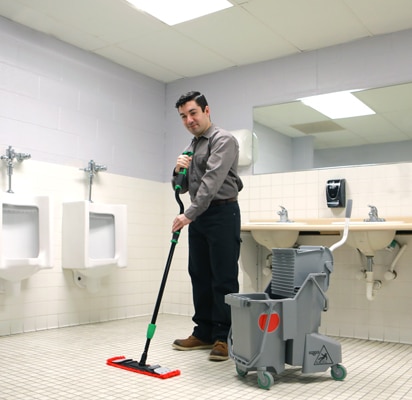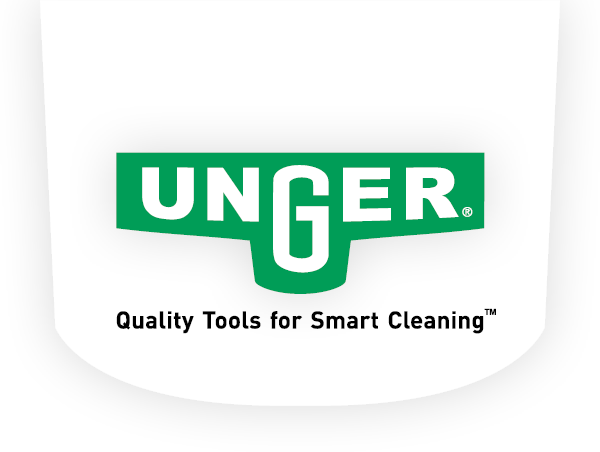NEW! Powerful Nano Filtration with Unger's HydroPower® Nano See The Product

Mop It Up
Using the right tools to prevent injury while floor cleaning and mopping
Source: Facility Cleaning & Maintenance
The majority of a custodian’s time is devoted to floor care, providing lots of opportunities to develop repetitive stress injuries (RSI) – the second leading cause of cleaning-related injuries. The term RSI encompasses injuries that affect bones, muscles, nerves and tendons due to overuse. These types of injuries cause continual and recurring pain and, as a result, employers have a duty to their workers to find a better way to complete this important cleaning task.
While there are many factors to consider when deciding how to best service facility floors, the most important is finding the right tool for the right job. The tool should be designed to complete the task quickly and efficiently while keeping the custodian safe. All too often tasks are performed by products designed for one purpose and utilized in a different way.
Unfortunately for those that clean, strip and finish floors, the evolution of mopping has been slow. Variations of the cotton string mop are still being used throughout the cleaning industry, despite advancements in materials. This is especially concerning because when wet, a string mop can weigh up to three times its dry weight, making it extremely hard on the wrists, hips and back. Add a bucket of water that can tip the scales at 40 pounds and suddenly floor cleaning becomes a herculean task.
THE SAFETY OF OBJECTS
RSIs don’t only affect workers. These types of injuries result in significant financial loss to organizations in time, production efficiency and worker’s compensation. So, if floor cleaning is a key service in business operations, it’s imperative to reduce or remove the possibility of repetitive motion injuries by choosing the appropriate, ergonomically designed tool for the task at hand.
Microfibre mops are ideal for floor cleaning because they require less water and chemicals than traditional cotton string mops, making them significantly lighter. (They weigh approximately two pounds, including handle, when wet.) Microfibre mops are also versatile, easy to clean and have longer life cycles than other mop materials in the marketplace. If the user is properly trained with the S-motion mopping technique, microfibre mops can quickly cover expansive areas with significantly less repetitious motion to the hips. Reduced weight also puts less strain on the worker’s back and prevents fatigue over time.
Mops with telescoping handles are ideal for cleaning processes because they enable the user to customize the tool to their appropriate height. If the handle isn’t suited for the worker, their hands cannot be correctly positioned to properly move the cleaning tool, which leads to awkward posture and ultimately causes high static shoulder muscle load. Mopping should be performed with a handle height that is relatively level with the user’s chin. This helps maintain proper form to avoid strain. Higher can cause poor or limited motion control, and also requires the user to extend too far from the body, resulting in pain in the lower back. Lower can cause stooping and lower back issues.
Handles should also be smooth with ergonomic grips to enable the user to guide the mop in the S-motion with limited rubbing, which can lead to blistering.
The use of a single cavity bucket limits proper cleaning because the solution is contaminated with the soiled rinse water. Dual bucket systems not only prevent cross-contamination but they are also significantly lighter when full because only half of the bucket is filled. Buckets should also be fitted with quick release valves for wastewater dumping to prevent awkward lifting into sinks.
Click here to learn more about the complete Unger Floor Care offering.
John Lombardo is vice-president of sales and marketing at Unger Enterprises LLC. For more than 50 years, Unger has created the tools professionals trust to clean and maintain facilities across the globe.
